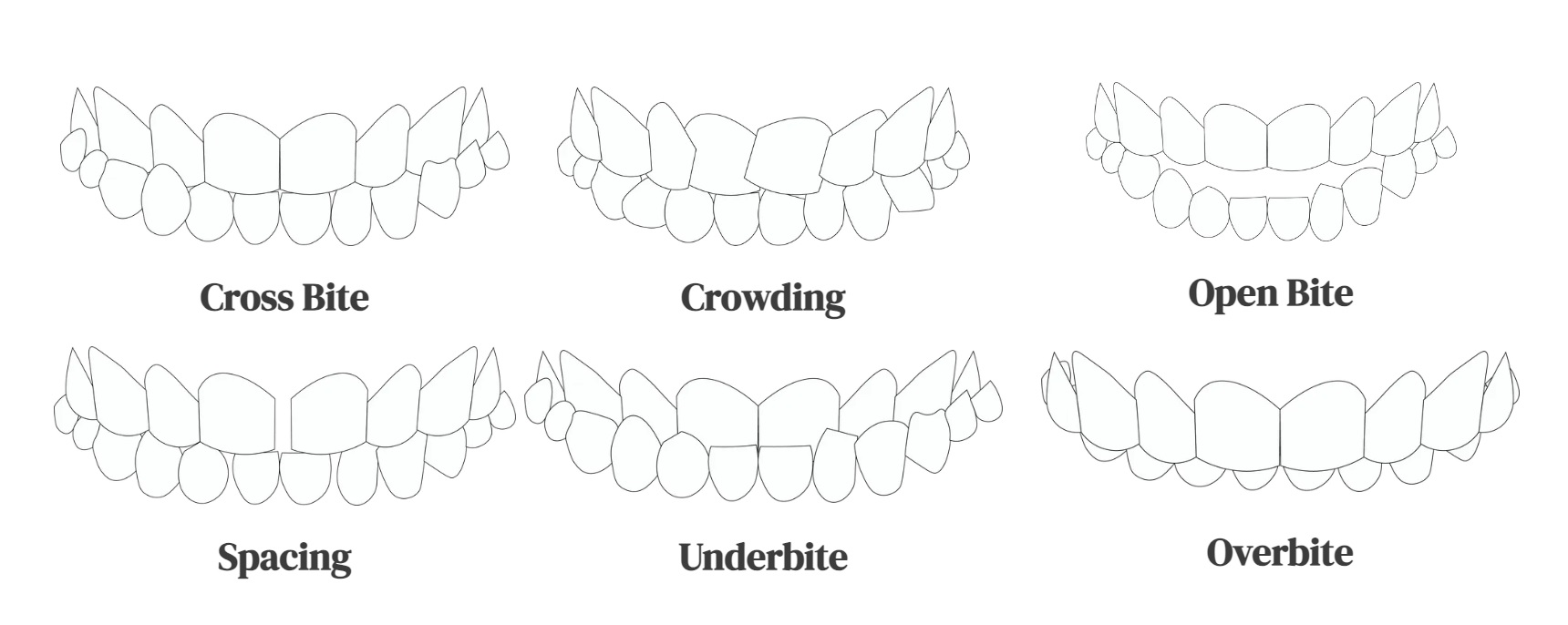$59/month Orthodontics Pearland $2999 Dental Braces for 2 Patients Promotion
Free Wisdom Tooth Extraction. Affordable Dental Braces for Pearland Residents
If you are looking for an affordable orthodontics treatment near Pearland Tx, call Chris Dentistry.
For this month. $59/month ( Regular is $89/month)

FREE, FREE, FREE this month
Our special Promotion. For the 1st 10 patients.
Buy one and get one FREE for Pearland orthodontic braces.
One free wisdom tooth surgery, and much more. Remember to tell your friends
and family members. "Share this Promotion"
— celebrating your special day.
Why Orthodontic Invisalign Braces $2999 Braces for 2 Patients Promotion
|
Orthodontic treatment is recommended for various reasons, including:
-
Misaligned Teeth: Orthodontic treatment can correct crooked, crowded, or protruding teeth, improving their alignment and overall appearance.
-
Overbite or Underbite: Orthodontics can address bite issues such as overbites (upper teeth protrude over the lower teeth) or underbites (lower teeth protrude over the upper teeth), improving the function and aesthetics of the bite.
-
Crossbite: A crossbite occurs when some of the upper teeth sit inside the lower teeth instead of outside. Orthodontic treatment can correct this alignment issue, improving oral function and preventing uneven wear on the teeth.
-
Spacing Issues: Gaps or spaces between teeth can be closed with orthodontic treatment, creating a more uniform and aesthetically pleasing smile.
-
Improving Oral Function: Orthodontic treatment can enhance the function of the teeth and jaws, making it easier to chew food properly and reducing strain on the jaw muscles.
-
Preventing Dental Problems: Misaligned teeth can contribute to dental issues such as tooth decay, gum disease, and temporomandibular joint (TMJ) disorders. Orthodontic treatment can help prevent these problems by aligning the teeth properly.
-
Enhancing Self-Confidence: A straighter and more attractive smile can boost self-esteem and confidence, leading to improved social interactions and overall well-being.
-
Promoting Oral Health: Orthodontic treatment improves oral hygiene by aligning the teeth properly, making them easier to clean and reducing the risk of dental issues in the future.
Overall, orthodontic treatment offers numerous benefits beyond just improving the appearance of the smile. By addressing alignment issues and improving oral function, orthodontics can enhance oral health, boost self-confidence, and contribute to overall well-being. If you have concerns about the alignment of your teeth or bite, consulting with an orthodontic doctors can help determine if orthodontic treatment is right for you.
|
|
This is how Orthodontics Invisalign Works $2999 Braces for 2 Patients Promotion
|
|
Orthodontics works by applying gentle pressure to the teeth and jaws to gradually move them into their correct positions. This is achieved through the use of various orthodontic appliances, such as braces or clear aligners, which exert force on the teeth to guide them into alignment.
Here's how orthodontic treatment typically works:
-
Initial Assessment: The orthodontist conducts a comprehensive examination of the teeth, jaws, and facial structure. This may involve taking X-rays, photographs, and dental impressions to assess the alignment of the teeth and the relationship between the upper and lower jaws.
-
Treatment Planning: Based on the assessment, the orthodontist develops a customized treatment plan tailored to the patient's specific orthodontic needs and goals. This plan may include the type of orthodontic appliance to be used, the duration of treatment, and the expected outcomes.
-
Placement of Appliances: Depending on the treatment plan, the orthodontist may recommend braces or clear aligners to correct the alignment of the teeth and jaws. Braces consist of brackets bonded to the teeth and wires that are attached to the brackets and exert pressure to move the teeth. Clear aligners are custom-made plastic trays that gradually shift the teeth into alignment.
-
Regular Adjustments: Throughout the course of treatment, the orthodontist schedules regular appointments to make adjustments to the orthodontic appliances. This may involve tightening wires, changing aligner trays, or making other modifications to ensure that the teeth are moving according to plan.
-
Monitoring Progress: The orthodontist closely monitors the progress of treatment and makes any necessary adjustments to the treatment plan as needed. This may involve taking additional X-rays or making modifications to the appliances to achieve the desired results.
-
Retention: Once the teeth have been moved into their correct positions, the orthodontist removes the braces or discontinues the use of clear aligners. To prevent the teeth from shifting back to their original positions, the patient may be required to wear a retainer, which helps maintain the new alignment of the teeth.
Orthodontic treatment requires careful planning, monitoring, and collaboration between the orthodontist and the patient to achieve optimal results. By gradually guiding the teeth into their correct positions, orthodontic treatment can improve the alignment of the teeth, enhance oral function, and create a healthier and more attractive smile.
|
|
Types of Malocclusion

|
Malocclusions, or improper bites, can manifest in several different ways. Here are some common types of malocclusions:
-
Overbite: Also known as "overjet," an overbite occurs when the upper front teeth overlap significantly with the lower front teeth vertically. This can lead to excessive wear on the lower teeth and potential jaw joint problems.
-
Underbite: An underbite occurs when the lower front teeth protrude past the upper front teeth horizontally. This can affect speech, chewing, and facial appearance.
-
Crossbite: A crossbite occurs when one or more of the upper teeth sit inside the lower teeth rather than outside when the jaws are closed. This can cause tooth wear, jaw misalignment, and asymmetrical facial growth.
-
Open Bite: An open bite is characterized by a gap between the upper and lower front teeth when the jaws are closed. This can interfere with biting and chewing and may be associated with speech difficulties.
-
Crowding: Crowding occurs when there is insufficient space in the dental arch for all the teeth to align properly. This can lead to overlapping or rotated teeth, making it difficult to clean between them and increasing the risk of tooth decay and gum disease.
-
Spacing: Spacing issues involve excessive gaps between teeth, which can occur due to missing teeth, small teeth, or abnormal growth of the jawbone. Spacing can affect the aesthetics of the smile and may increase the risk of food impaction and gum problems.
-
Midline Misalignment: Midline misalignment occurs when the centerline of the upper and lower teeth does not align properly. This can affect facial symmetry and may contribute to jaw joint problems and uneven tooth wear.
Each type of malocclusion requires specific orthodontic treatment tailored to the individual's needs and goals. An orthodontist can assess the malocclusion and recommend the most appropriate treatment approach to achieve optimal dental alignment and oral health. More information
|
www.chrisdentistry.com
4 Locations to serve you. Webster, Pearland, Katy, and Houston
Email=piiam@dr.com. Main Phone/Text=832.935.2418
Address: 100 E NASA Pkwy # 50, Webster, TX 77598
Marketing, Branding, Website Design and Build by www.7boxdesigner.com


